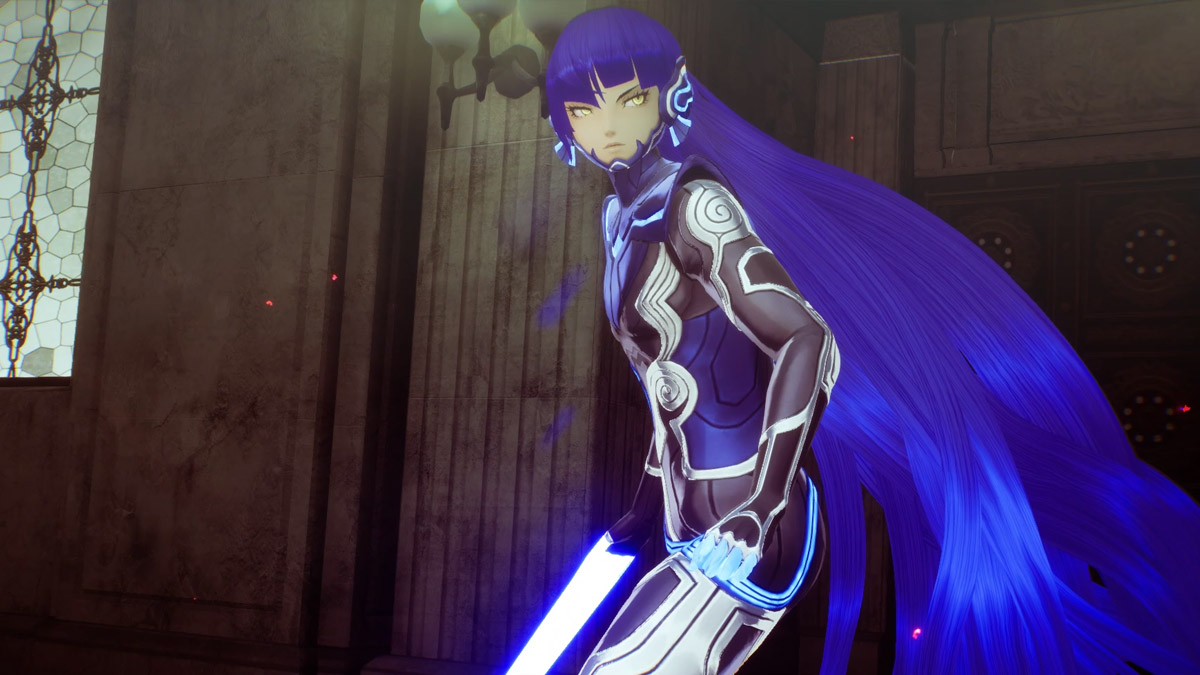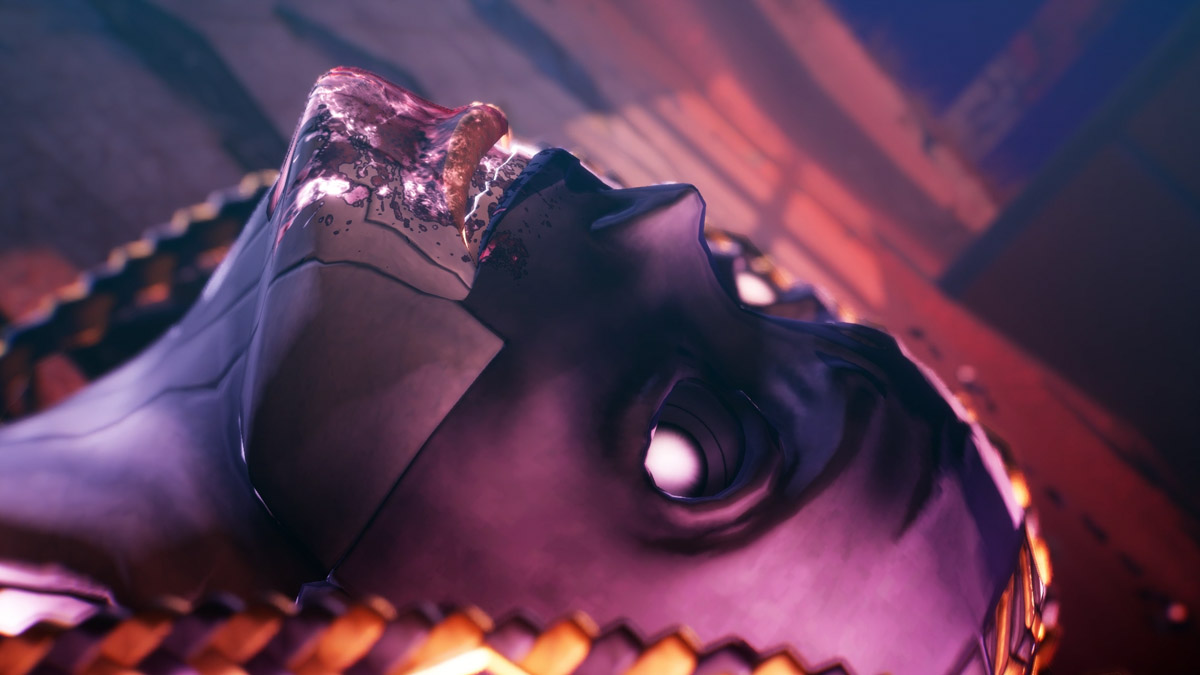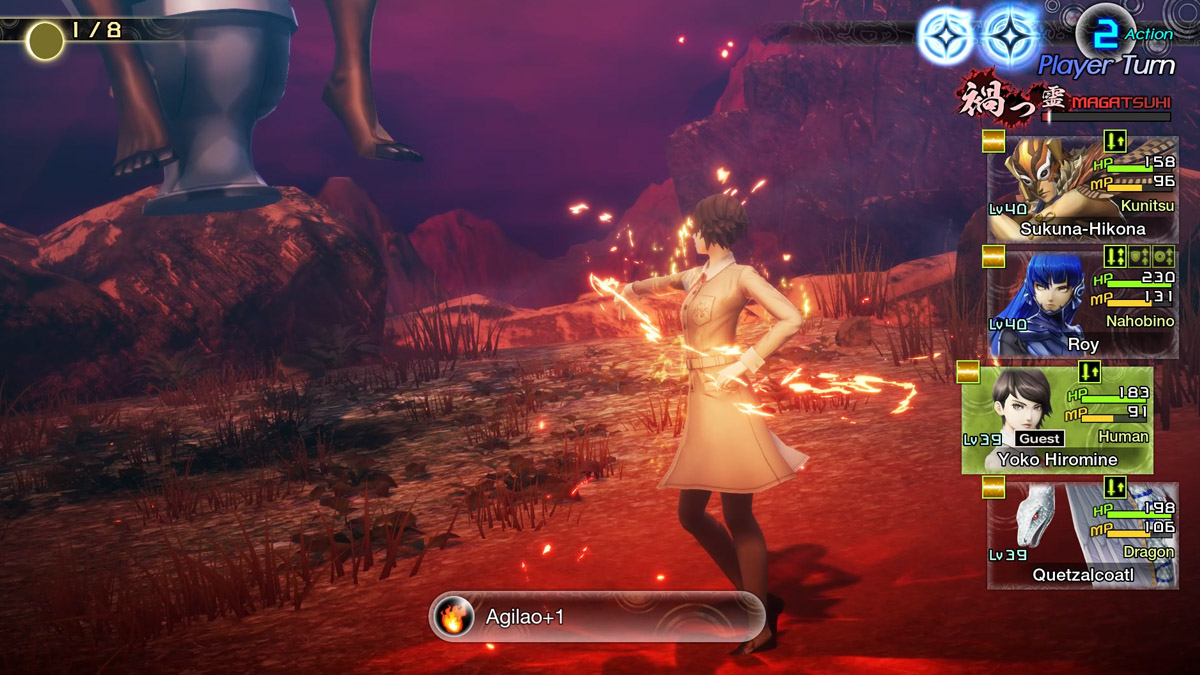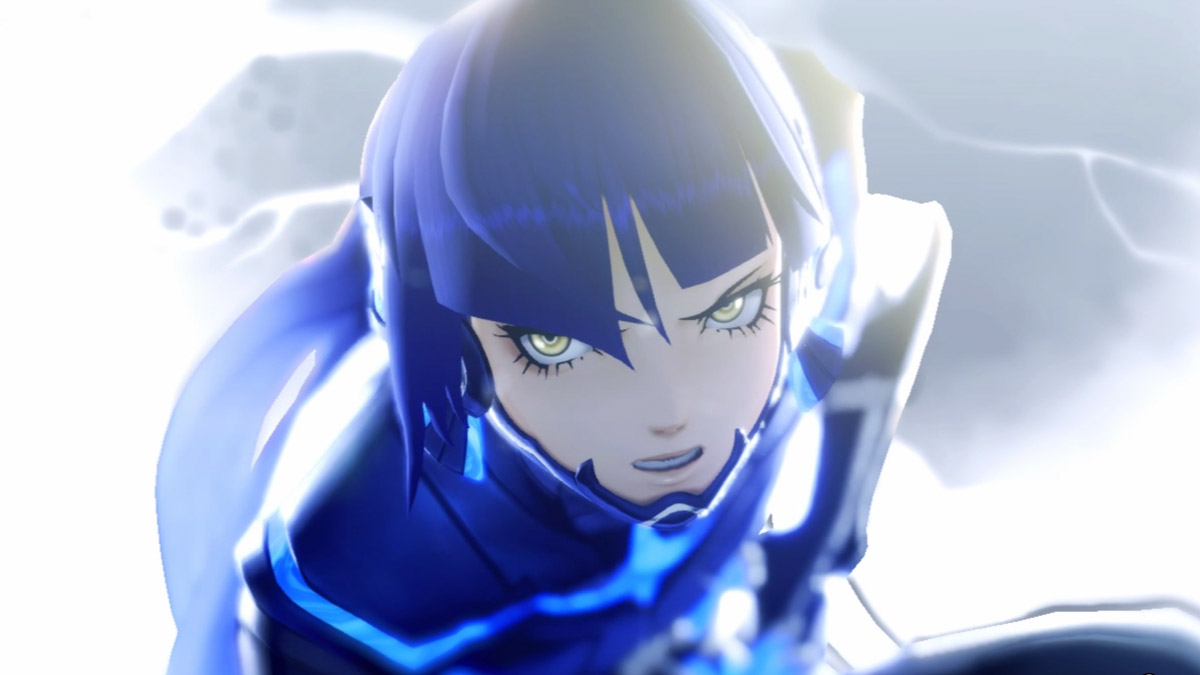Serving as the opening act of the second half of a very successful year for JRPGs, Shin Megami Tensei V: Vengeance arrives as the definitive version of the latest title in Atlus’ notoriously difficult series, bringing its already enthralling gameplay to a whole new level, now with stable performance.
Two Paths, Numerous Destinies
As the original Shin Megami Tensei V was a Nintendo Switch exclusive, it’s about time Atlus (which has adopted a multi-platform strategy over the last few years) brought it to a broader audience. Taking inspiration from its traditional re-releases with enhanced features (with Persona 5 Royal as the latest example), Shin Megami Tensei V: Vengeance is the newest way to experience the fifth main entry in the turn-based RPG series.
We have numerous additions to the base gameplay, like new shortcuts added to the maps, being able to save at any time, a better auto-battle mode, the addition of Magatsuhi enemies (red glowing enemies that give better loot/EXP), new areas, new Demons, and much more. All of that with a stable performance.
Set in a post-apocalyptic world, Vengeance once again puts you in the shoes of an ordinary High School student who finds himself lost in a twisted Tokyo after surviving an accident. Before Demons can claim your life, a tall figure known as Aogami offers his hand to you, stating that this is your only chance to survive. By taking his hand, you become a half-human, half-demon being known as the Nahobino, who now fights its way through this changed world to figure out the truth behind these strange incidents.

But before meeting Aogami, you have now the choice of taking someone else’s hand too. Taking a girl’s hand when starting the game will put you into the Canon of Vengeance, a new route featuring different characters and a new plot. The original version’ story is included as the Canon of Creation, available if you refuse to take her hand.
Both Canons start out similarly but have massive differences halfway through. They also have multiple endings, so the replay value is huge here, true to the series’ tradition. Some content can only be witnessed through multiple runs. All new gameplay additions and enhancements are present in both Canons, but I’ll be focusing on Vengeance as it brings a new, original plot to this chaotic story.
The open world is a mixed bag, to say the least. The destroyed setting evokes feelings of loneliness and dread that follow you through all of the game’s areas, even though you’re always accompanied by someone else. This resonates perfectly with the difficult battles in the game, which, more often than not, leave you with little hope of living another day if you’re not well-prepared. You always find yourself between the sword and the wall here.
This mood is perfect for the story SMT V is telling, even if it might be off-putting for some. The narrative is much more polished in the new Canon, but the gameplay is still the brightest gem in the collection. However, its glow may be more than enough to push you through the slower parts of the story, as the payoff is more than satisfying.
As for the art direction, you probably know what to expect from Atlus by now if you’re into the genre. Vengeance dispenses the flashy menus and colorful palettes for a more traditional, straight-to-the-point UI here, as it better fits the series. However, other aspects such as OST and character design, are still some of the best available in the industry. The human cast has a simpler approach to designs (which is not bad), but supernatural creatures are quite diverse and always manage to hit the right spots. The Nahobino design speaks for itself, and that’s only one of the many examples.

The eerie soundtrack evokes the “word forsaken by God” feeling whenever you’re running through the wastelands, only to hit you with one of its many BPMs (Bangers Per Minute) whenever you’re thrown into combat.
Bringing Some Soul To The Party
The most important change in the Canon of Vengeance is the presence of Yoko Hiromine, the girl who offered her hand at the start. She’s your typical mysterious character who barely shows any emotion, but her interactions with other characters and meaningful presence in battle make her feel crucial to the game at all times.
Yoko’s presence draws out the Qadištu, a group of female demons called the Goddesses of Vengeance that threaten the world’s order. And the Goddesses of Vengeance always deliver whenever their menacing presence appears on the screen. Through terror, deception or temptation, they are some of the most devilish entities in the game. Especially compared to the game’s Demons, who act much more like ill-intentioned humans than actual hellish creatures depicted in myths and legends.

The first few hours of SMT V: Vengeance are slow, but the story gradually picks up as you start learning about the world and the goddesses make their moves against humanity. But fending them off isn’t enough, as there’s something more threatening the world, and it’s up to you (and your party) to uncover all of the hidden conspiracies for the sake of Law, Chaos or Neutrality. Whichever fits you best.
One of the main criticisms of the original game was how the human cast felt half-baked throughout the story. This is fixed in Vengeance by giving them a bigger role as actual JRPG party members. Not only do they help you in battle, but they’re more prominent in earlier sub-plots, too. You may actually care whenever something bad happens to them. And trust me, it will happen. It’s SMT, after all.
Human allies have fixed movesets that get gradually better as you advance through the plot and have access to items from the get-go. This makes a huge difference for the tough early game, but not to the point of completely trivializing it. The challenge is still there, but you have some better options to tackle it now.

Yoko is the first one to join the team, but others follow her soon after. Tao, Ichiro and Yuzuru will all join you at some point, even if they eventually leave due to story reasons. However, these brief moments are enough to give them some meaningful interactions during your regular exploration. It’s nice to see Tao and Yoko being polar opposites yet getting along, or witnessing Ichiro’s search for power and usefulness being built up over time.
This all culminates into a delightful (but slow) tale with interesting twists. Knowing the Canon of Creation’s plot will help you figure out some details earlier, but most of the stuff will still take you by surprise, making it appealing for both new fans and veterans. Around 60% of the Vengeance route can be considered entirely new content. Some plot points are reused, but they are often repurposed or presented through new lenses.
Suffering Builds Character (And Overpowered Demons)
Demons are your trusty comrades in arms. You can recruit them to your team and fuse them to create more powerful versions. They’re much more flexible than human party members (although they can’t use items at the start), and you’re constantly shifting between them to accommodate the punishing battles in the game. Just like the Nahobino, you can fully customize their kits, although they’re always specialized in certain areas.
You recruit Demons to your party through negotiation, convincing them to join you by giving them whatever they ask. That could be money, items, or even health. You’ll never be bored with Demons in your party, as some of the comments are straight-up shitposts. You may even get special dialogue if you have certain Demons in your party.

One of my favorite new aspects is the introduction of team abilities. By having specific Demons in your party, you get access to extremely powerful skills with unique animations and very interesting effects. Perfect for specific boss battles where those Demons can really shine. Need to hit some Ice-weak enemies? Hee-re comes the Jack family, ho!
The cycle of recruiting, fusing and adapting to enemies is the core of the game, which can extend for 70+ hours depending on your playstyle. But it’ll probably be a lot more, as your save file cannot record the time you lost before you had to restart.
If this is your first time playing an SMT title, get ready for suffering. The series is notorious for its higher-than-average difficulty, which remains intact here. Combat is quite similar to Persona, but there are some key differences. A few consecutive hits can easily kill the Nahobino, and if the protagonist falls, it’s game over. A difficult early game is common for RPGs, but regular enemies never stop being a real threat to you.
30 hours in and I found a glowing red Demon right after fully healing my whole team. But as soon as I engaged it, my excitement turned into regret. I audibly gasped as I saw the enemy taking its turn first. I knew exactly what was about to happen. One move and my fears were confirmed. My whole team took over 500 damage each when my highest HP was 360. Classic SMT moment.

You’re encouraged to abuse the Press Turn system, or you’re toast. Items are essential in higher difficulties, and some fights are borderline impossible without them (unless you are over leveled, of course). One error can be fatal, but that’s when creativity can be brought to light.
Developing clever strategies to overcome progress walls just hits you differently. I brought a few under-leveled Demons to use their team ability in a boss fight once, and I just couldn’t believe my eyes when it actually worked. I had a lot of luck, of course, but winning with weird strategies always gives me the biggest smile.
I see it as a “you’re overpowered, but so are your enemies” situation, which makes fights feel “fair” in a certain way. For those who say that games are just too easy nowadays, this is a nice change of pace. I was constantly engaged in the fights and just couldn’t get enough of them as I repeatedly died to my own mistakes. In fact, it only made me celebrate my victories more.
Hell Is Just Around the Corner
With all praises done, it’s important to know what kind of troubles you’ll be getting into. And as no title is perfect, there are still a few glaring issues lurking around. The introductory act is one of them. You get into action very quickly (less than 20 minutes into the game), but nothing meaningful happens until the end of the first Da’at area. Until then, you’re on your own, trying to figure out the systems and experimenting with combat.
This makes the early game a slog to go through, as progression still feels slow. Exploration is greatly improved, but some of the needlessly huge areas are just a drag. Many of them feel very similar and it’s hard to pinpoint where you are exactly. It makes sense given the setting, but it wouldn’t hurt to see some different scenarios earlier in the game other than destroyed cities. More variety is added later, but it might be too late to keep you engaged.
Parallelly, it still feels like certain things just happen too quickly without much explanation, especially during the early game. The writing is improved, that’s for certain, but some moments feel incomplete at times. The result is an uncanny feeling that nothing’s happening in the story during certain parts, as if you’re just dragging along to see what happens. And to listen to those awesome boss soundtracks along the way, of course. But it does get better.
Despite its flaws, I can’t recommend this title enough to longtime series fans or potential new players who want to give it a try. The 3D models are always on point and an open-world exploration can be more appealing than fighting for hours inside the same dungeon. The positives greatly outshine the negatives 100% of the time.
Verdict: Recommended
The original SMT V was considered a good game that could be great, and Vengeance lives up to that potential with enhanced combat, a cohesive plotline, and hours of new content. Chatting with slimes and paying them money to die for you has never been so fun.
Shin Megami Tensei V: Vengeance will be available on June 14, 2024, for PlayStation, Xbox, Nintendo Switch and PC. A code was provided by the publisher for review.






Published: Jun 12, 2024 12:01 pm